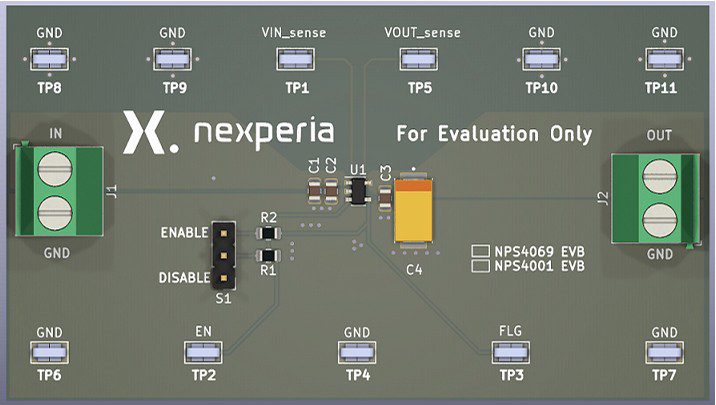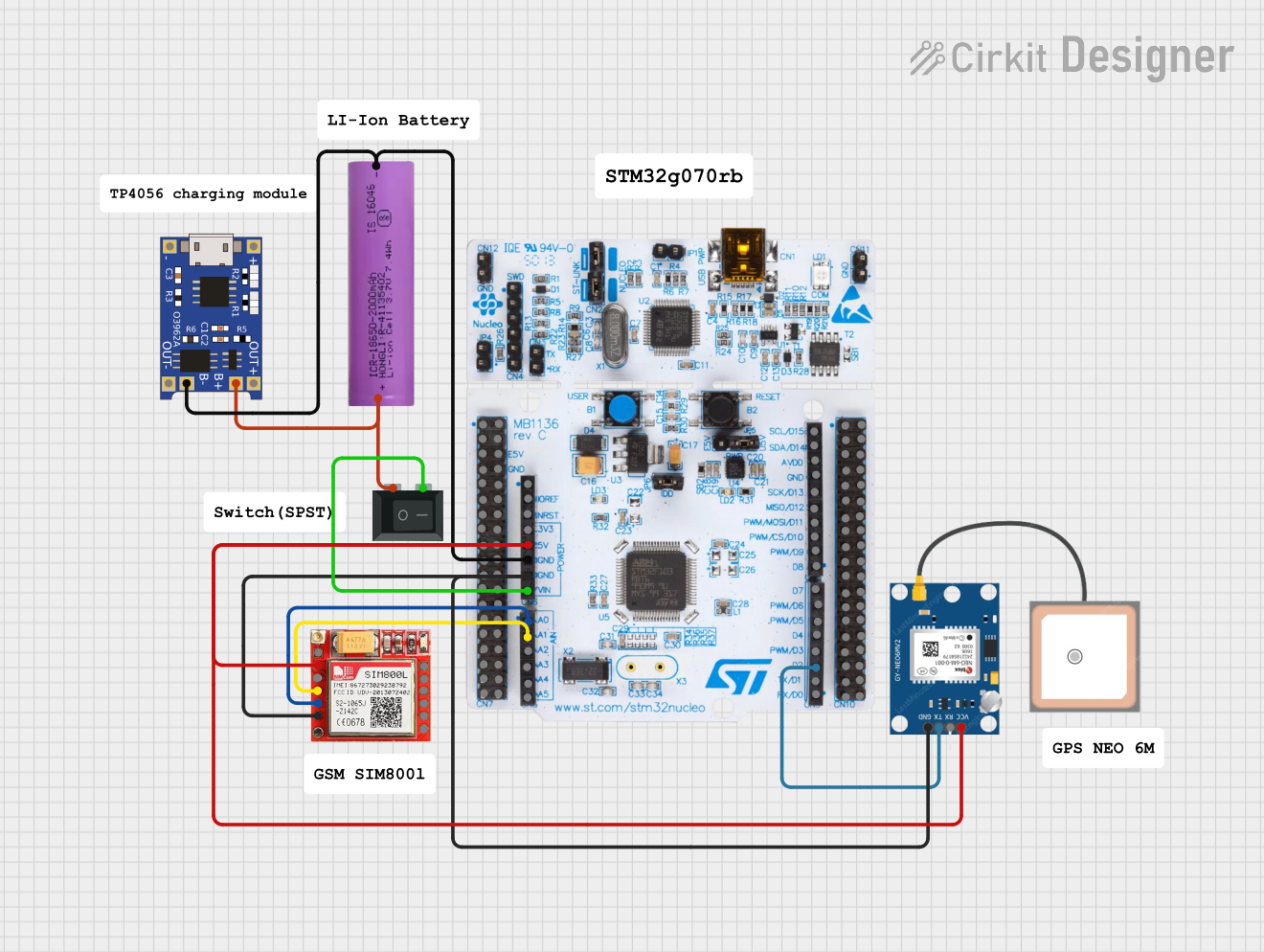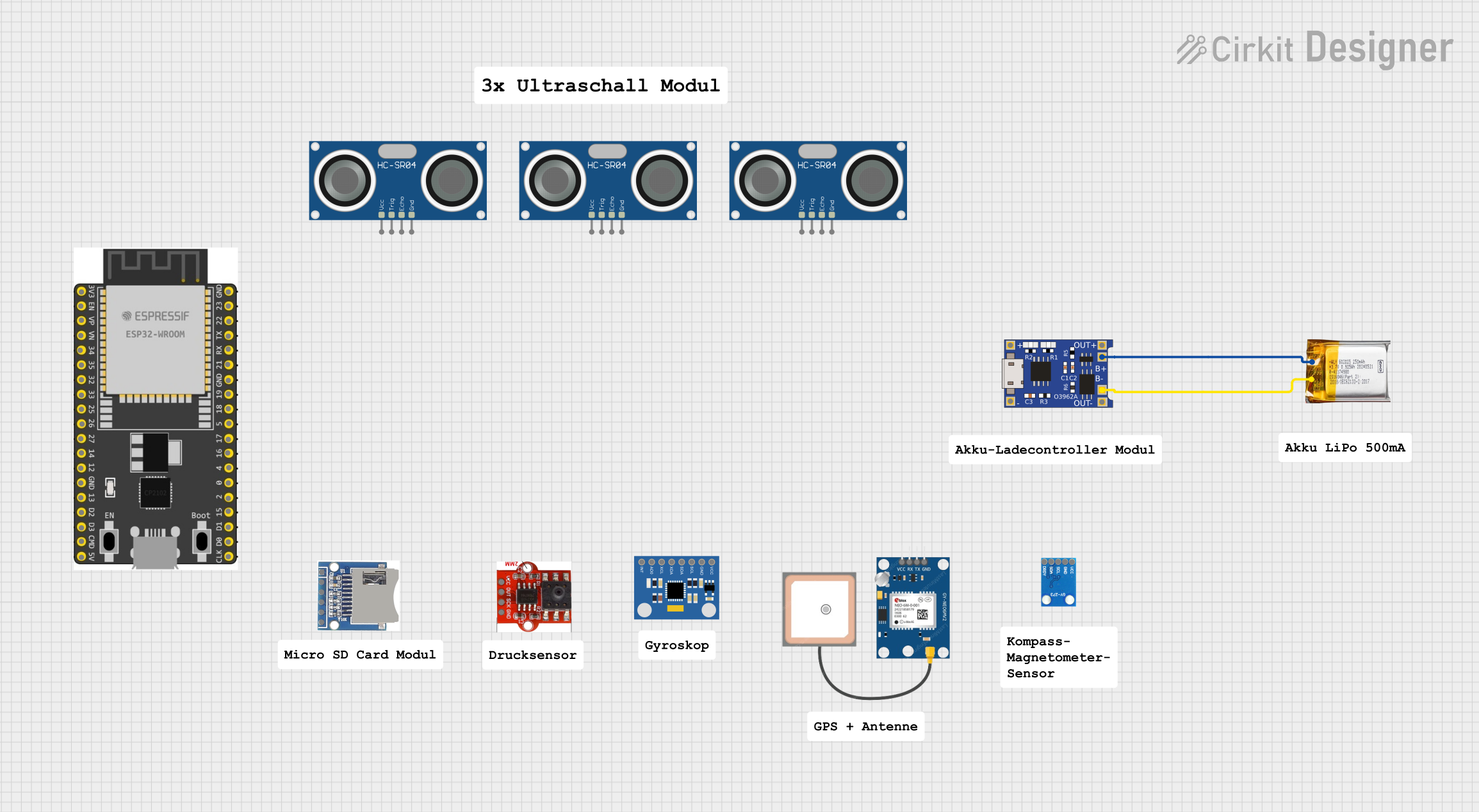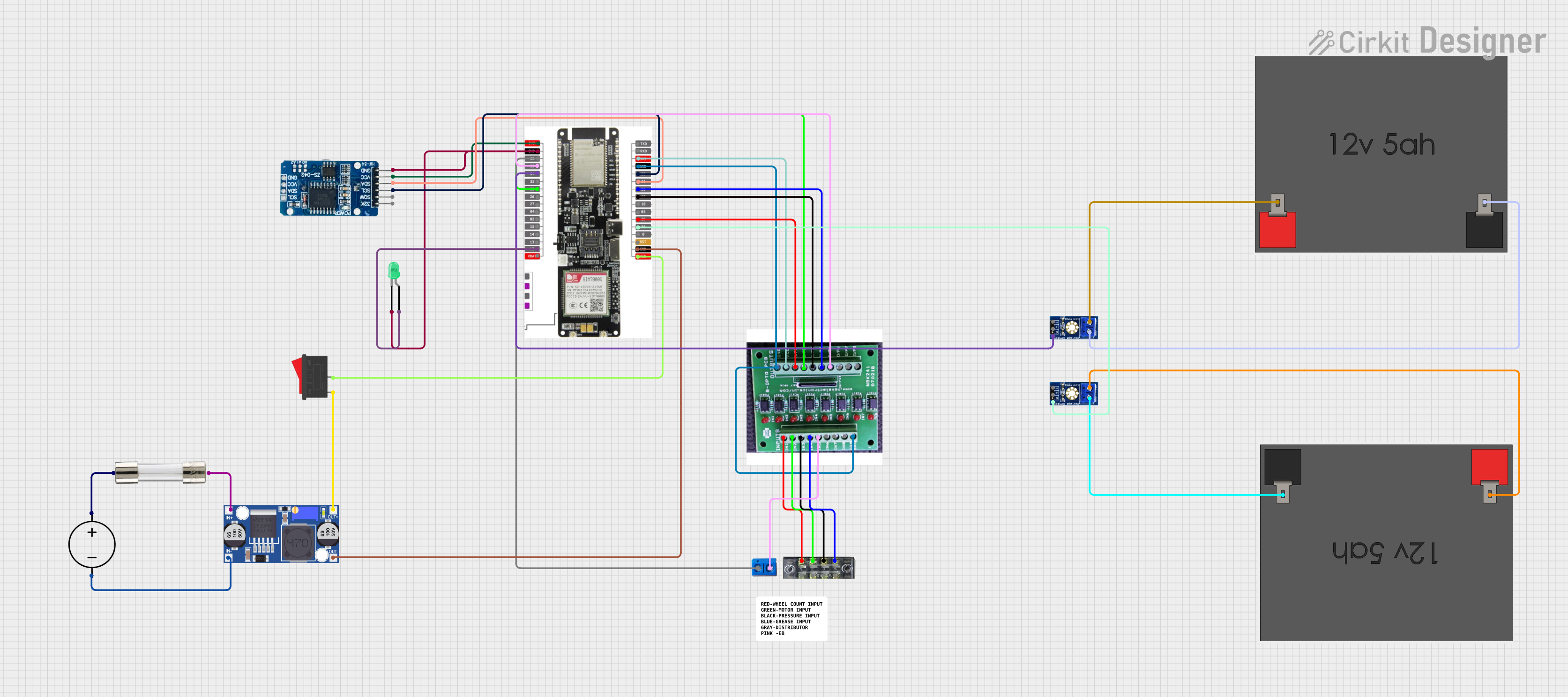
How to Use NPS4069EVB: Examples, Pinouts, and Specs

 Design with NPS4069EVB in Cirkit Designer
Design with NPS4069EVB in Cirkit DesignerIntroduction
The NPS4069EVB is an evaluation board developed by Nexperia to demonstrate the capabilities of the NPS4069, a high-efficiency, low-power buck converter. This evaluation board is designed to simplify the testing and evaluation of the NPS4069 in various applications, such as power management systems, battery-powered devices, and industrial electronics. It features adjustable output voltage and current capabilities, making it a versatile tool for engineers and designers.
Explore Projects Built with NPS4069EVB

 Open Project in Cirkit Designer
Open Project in Cirkit Designer
 Open Project in Cirkit Designer
Open Project in Cirkit Designer
 Open Project in Cirkit Designer
Open Project in Cirkit Designer
 Open Project in Cirkit Designer
Open Project in Cirkit DesignerExplore Projects Built with NPS4069EVB

 Open Project in Cirkit Designer
Open Project in Cirkit Designer
 Open Project in Cirkit Designer
Open Project in Cirkit Designer
 Open Project in Cirkit Designer
Open Project in Cirkit Designer
 Open Project in Cirkit Designer
Open Project in Cirkit DesignerCommon Applications and Use Cases
- Power supply for microcontrollers and low-power devices
- Battery-powered systems
- Industrial control systems
- Consumer electronics
- Prototyping and testing of DC-DC conversion circuits
Technical Specifications
Key Technical Details
- Input Voltage Range: 4.5 V to 40 V
- Output Voltage Range: Adjustable from 0.8 V to 15 V
- Output Current: Up to 2 A
- Switching Frequency: 500 kHz (typical)
- Efficiency: Up to 90% (depending on load and input/output conditions)
- Operating Temperature Range: -40°C to +125°C
- Dimensions: Compact PCB layout for easy integration
Pin Configuration and Descriptions
The NPS4069EVB features several key pins and connectors for input, output, and control. The table below provides a detailed description of each pin:
| Pin/Connector | Label | Description |
|---|---|---|
| J1 | VIN | Input voltage terminal (4.5 V to 40 V). Connect the power source here. |
| J2 | GND | Ground terminal. Connect to the ground of the power source. |
| J3 | VOUT | Output voltage terminal. Connect the load here. |
| J4 | EN | Enable pin. Apply a logic HIGH to enable the converter, or LOW to disable it. |
| JP1 | VOUT Adjust | Jumper to adjust the output voltage. Use external resistors for fine-tuning. |
| TP1 | Test Point | Test point for monitoring the output voltage. |
| TP2 | Test Point | Test point for monitoring the input voltage. |
Usage Instructions
How to Use the NPS4069EVB in a Circuit
Power Supply Connection:
- Connect the input voltage (4.5 V to 40 V) to the
VINterminal (J1). - Connect the ground of the power source to the
GNDterminal (J2).
- Connect the input voltage (4.5 V to 40 V) to the
Load Connection:
- Connect the load to the
VOUTterminal (J3). - Ensure the load does not exceed the maximum output current of 2 A.
- Connect the load to the
Enable the Converter:
- Use the
ENpin (J4) to enable or disable the converter. Apply a logic HIGH (e.g., 3.3 V or 5 V) to enable the device.
- Use the
Adjust Output Voltage:
- Use the
VOUT Adjustjumper (JP1) to set the desired output voltage. - For fine-tuning, connect external resistors to the appropriate test points.
- Use the
Monitor Performance:
- Use the test points (TP1 and TP2) to monitor the input and output voltages with a multimeter or oscilloscope.
Important Considerations and Best Practices
- Ensure the input voltage is within the specified range (4.5 V to 40 V) to avoid damaging the board.
- Do not exceed the maximum output current of 2 A to prevent overheating or failure.
- Use proper heat dissipation techniques if operating at high loads for extended periods.
- When adjusting the output voltage, verify the settings with a multimeter before connecting sensitive loads.
- Always follow proper ESD precautions when handling the evaluation board.
Example: Connecting to an Arduino UNO
The NPS4069EVB can be used to power an Arduino UNO by providing a stable 5 V output. Below is an example of how to configure the board:
- Set the output voltage to 5 V using the
VOUT Adjustjumper. - Connect the
VOUTterminal (J3) to the Arduino's 5 V pin. - Connect the
GNDterminal (J2) to the Arduino's GND pin.
Here is a simple Arduino sketch to blink an LED while powered by the NPS4069EVB:
// Simple LED Blink Example
// This sketch blinks an LED connected to pin 13 of the Arduino UNO.
// Ensure the NPS4069EVB is providing a stable 5 V to the Arduino.
void setup() {
pinMode(13, OUTPUT); // Set pin 13 as an output
}
void loop() {
digitalWrite(13, HIGH); // Turn the LED on
delay(1000); // Wait for 1 second
digitalWrite(13, LOW); // Turn the LED off
delay(1000); // Wait for 1 second
}
Troubleshooting and FAQs
Common Issues and Solutions
No Output Voltage:
- Verify that the input voltage is within the specified range (4.5 V to 40 V).
- Check if the
ENpin is set to logic HIGH to enable the converter. - Ensure the load is properly connected to the
VOUTterminal.
Overheating:
- Ensure the load does not exceed the maximum output current of 2 A.
- Check for proper ventilation and consider adding a heatsink if necessary.
Output Voltage is Incorrect:
- Verify the
VOUT Adjustjumper settings and external resistor values. - Use a multimeter to measure the output voltage and adjust as needed.
- Verify the
Board is Not Powering the Load:
- Check all connections to ensure they are secure.
- Verify that the load is within the board's power capabilities.
FAQs
Q1: Can the NPS4069EVB be used with a battery as the input source?
A1: Yes, the board can be powered by a battery as long as the input voltage is within the range of 4.5 V to 40 V.
Q2: How do I adjust the output voltage precisely?
A2: Use the VOUT Adjust jumper and connect external resistors to fine-tune the output voltage. Refer to the datasheet for resistor value calculations.
Q3: Is the board protected against short circuits?
A3: The NPS4069 includes built-in protection features, but it is recommended to avoid intentional short circuits to prevent damage.
Q4: Can I use the board for currents higher than 2 A?
A4: No, the maximum output current is 2 A. Exceeding this limit may damage the board or reduce its lifespan.